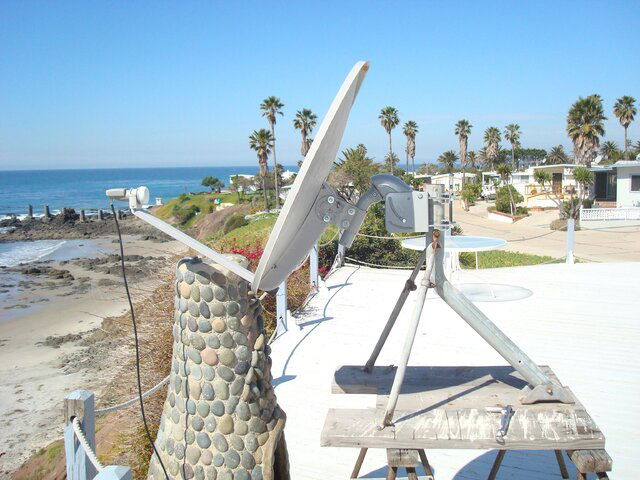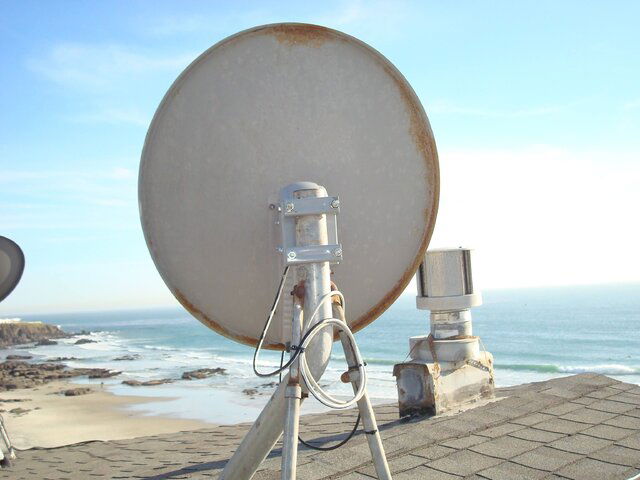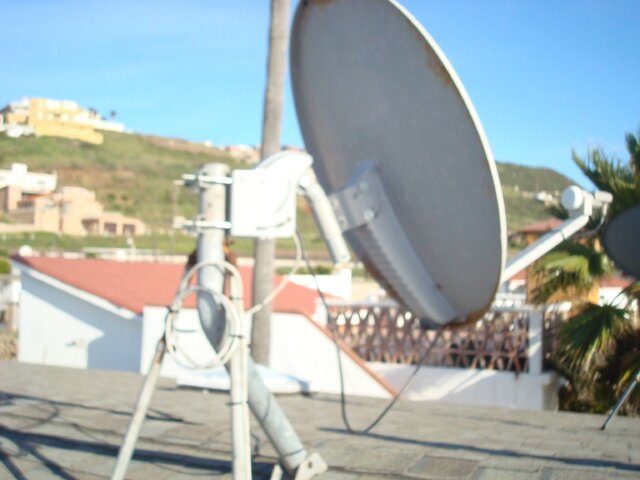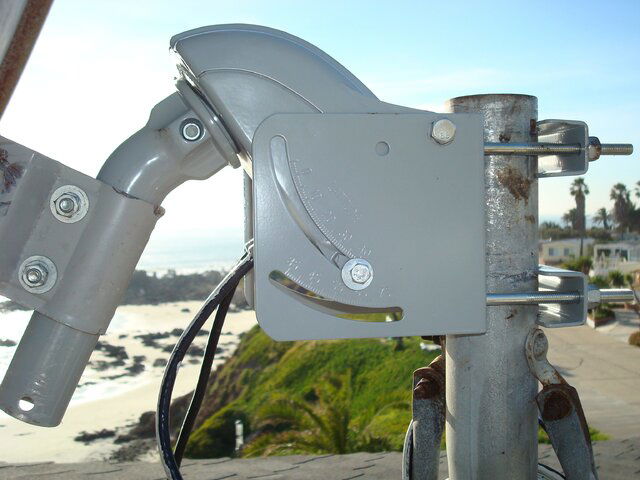


Although today wasn't truely "day 1" (I messed with it down on the ground -rough install to get accustomed) today was day #1 of the permanent install.
Before getting into a review I putchased the SG9120B from the ebay authorized reseller only because the shipping charges were cheaper and they would ship to my PO box (more convenient for me). The first motor arrived DOA - however, they shipped a replacement right away - even before I returned the DOA motor. Overall I was very happy with the reseller, but in hindsight I would have been much less anxious had I been dealing with Robby instead of an unknown. I'm not slamming the reseller at all, but I did have some anxiety wondering if the whole deal would turn out OK.
On to the install! Since we get alot of winds here, I decided to use an old Direcway tripod mount for the dish motor combination all hard mounted on the roof. These old tripod mounts were engineered for the wind loads and weight of those dishes and make a very sturdy mount.
I elected to install the tripod support legs a little bit more upright than usual. I have high hopes of putting a 4' dish up there someday, and wanted to make sure there was clearance.
My TS is SM5. Set the motor Lat at 32, set the dish at @24 deg, plugged in the Birdog found the bird and fine tuned. I don't have it dialed in as well as I'd like, but was getting 75S and 60Q on SM5.
I'm not quite on the arc (yes, the mount is DEAD level). Motored over to G19 (97) and got 75S and 55-60Q, further along at G18 (89) gave me 70S and 20Q. As I get further away from TS. the alignment error magnifies. No big surprise there.
I need to go back and fine tune - but I'm done for today. Some pix as requested by the green one.
Progress yes - but more work to do on day 2.
This is my first motor. For those thinking about it - the motor moves slower than you would expect. It moves fine, but remember it IS a DC motor! Make small movements and wait for things to settle down! It moves just fine, but I think many of us are accustomed to AC motors that zip in an instant!
Note - the long loop from the LNB to the motor will be shortened. I wasn't real sure how long the travel would be and wanted to drive it full travel before I cut to proper length.
It's Miller time.



